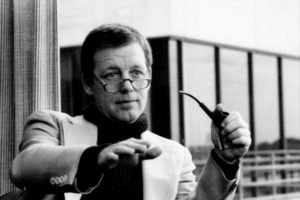Bob Taylor, the man who funded the Arpanet (the military precursor of the Internet), has died at the age of 85. He also funded much of Doug Engelbart’s ‘augmentation’ research at SRI. After Arpanet was up and running, Bob left to found the Computer Science Lab at Xerox PARC. His ambition for CSL, he said, was to hire the 50 best computer scientists and engineers in the US and let them do their stuff. He didn’t get 50, but he did get some real stars — including Bob Metcalfe, Chuck Thacker, David Boggs, Butler Lampson, Alan Kay and Charles Simonyi who — in three magical years — invented much of the technology we use today: bitmapped windowing interfaces, Ethernet and the laser printer, networked workstations, collaborative working, to name just a few. They were, in the words of one chronicler “dealers of lightning”. Bob’s management style was inspired. His philosophy was to hire the best and give them their heads. His job, he told his geeks, was to protect them from The Management. And he was as good as his word.
Xerox, needless to say, fumbled the future the company could have owned. Steve Jobs saw what Bob’s team were doing and realised its significance. He went back to Apple and started the Macintosh project to bring it to the masses.
Bob and I had a friend in common — Roger Needham, the great computer scientist, who worked with Bob after he had left PARC to run the DEC Systems Research Center in California. When Roger was diagnosed with terminal cancer his Cambridge colleagues organised a symposium and a festschrift in his honour. Bob and I co-wrote one of the essays in that collection. Its title — “Zen and the Art of Research Management” — captured both Bob’s and Roger’s management style.
The NYT obit is properly respectful of Bob’s great contribution to our world. One of the comments below it comes from Alan Kay who was one of the CSL stars. He writes:
Bob fully embraced the deeply romantic “ARPA Dream” of personal computing and pervasive networking. His true genius was in being able to “lead by getting others to lead and cooperate” via total commitment, enormous confidence in his highly selected researchers expressed in all directions, impish humor, and tenacious protection of the research. He was certainly the greatest “research manager” in his field, and because of this had the largest influence in a time of the greatest funding for computing research. It is impossible to overpraise his impact and to describe just how he used his considerable personality to catalyze actions.
The key idea was to have a great vision yet not try to drive it from the funders on down, but instead “fund people not projects” by getting the best scientists in the world to “find the problems to solve” that they thought would help realize the vision. An important part of how this funding was carried out was not just to find the best scientists, but to create them. Many of the most important researchers at Xerox PARC were young researchers in ARPA funded projects. Bob was one of the creators of this process and carried it out at ARPA, Xerox PARC, and DEC. He was one of those unique people who was a central factor in a deep revolution of ideas.
Yep: unique is the word. May he rest in peace.
Image courtesy of Palo Alto Research Center

